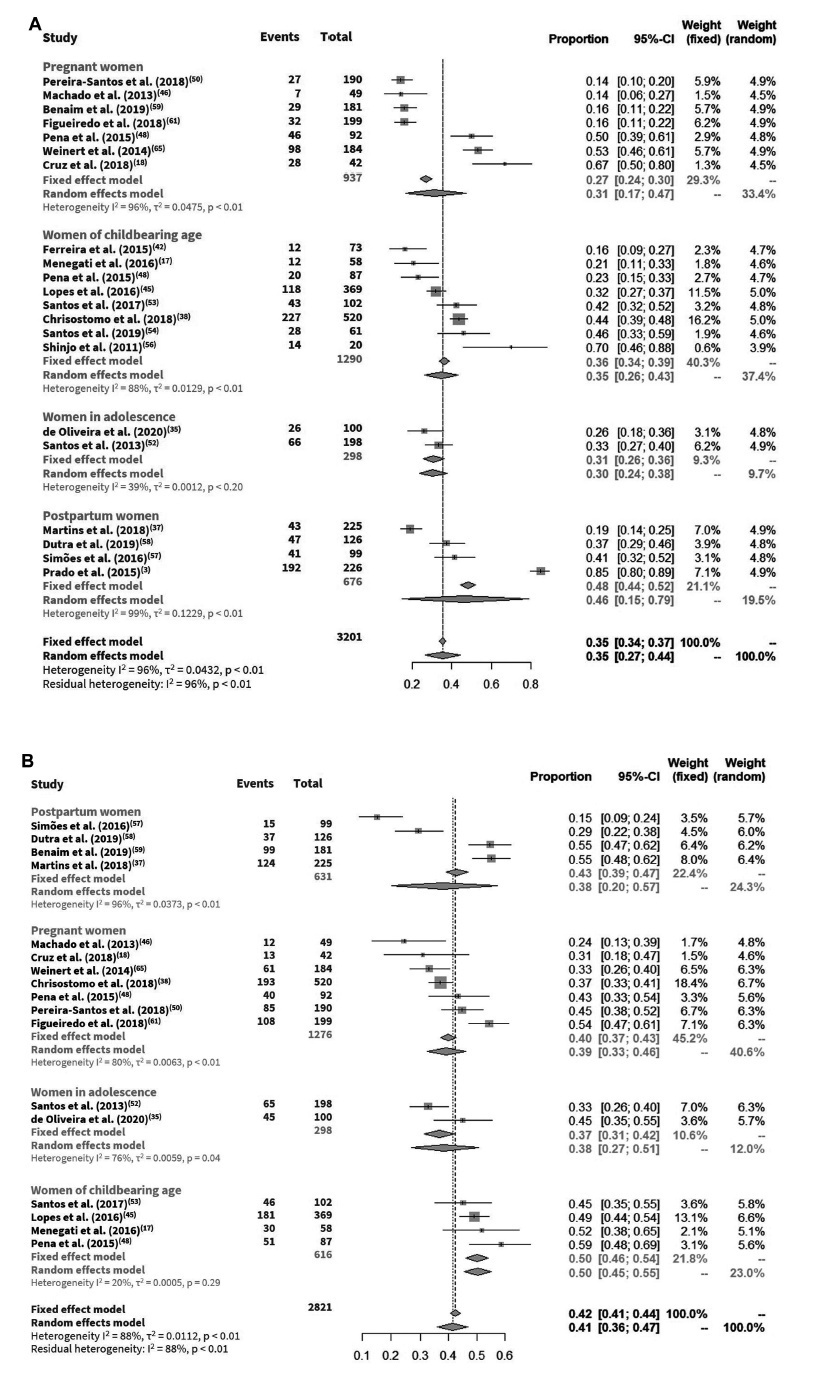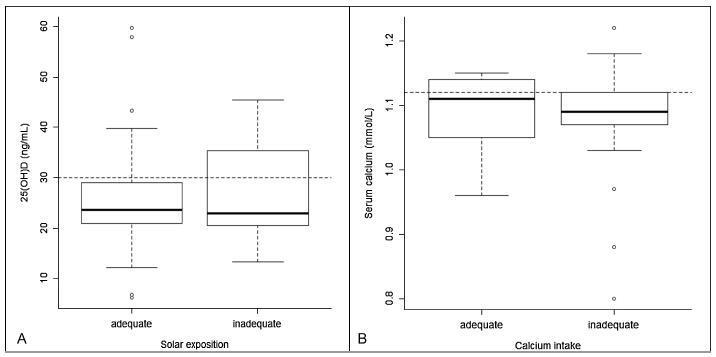Summary
Revista Brasileira de Ginecologia e Obstetrícia. 2022;44(4):409-424
To estimate the prevalence of inadequate vitamin D level and its associated factors for women of childbearing age in Brazil.
A systematic reviewwas conducted (last updatedMay 2020).Meta-analyses were performed using the inverse-variance for fixed models with summary proportion calculation by Freeman-Tukey double arcsine. Reporting and methodological quality were assessed using the Joanna Briggs Institute tool for prevalence studies.
Our review identified 31 studies, comprising 4,006 participants. All the studies had at least one weakness, mainly due to the use of convenience sampling and small sample size. The overall prevalence of vitamin D deficiency, insufficiency, and both deficiency and insufficiency were 35% (confidence interval, 95%CI: 34-37%), 42% (95%CI: 41-44%), and 72% (95%CI: 71-74%), respectively.
Although the magnitude of the prevalence of inadequate levels of vitamin D is uncertain, the evidence suggests that presence of vitamin D deficiency or insufficiency in women of reproductive age can cause moderate to severe problems.

Summary
Revista Brasileira de Ginecologia e Obstetrícia. 2017;39(3):102-109
To assess the prevalence of hypovitaminosis D, altered arterial blood pressure, and serum levels of glucose and lipids in community-dwelling women in the city of Ribeirão Preto, in the southeast of Brazil.
Thiswas a cross-sectional studyof women aged40-70years old.Calciumintake and level of sun exposure were assessed by means of a questionnaire. A blood sample was used to determine glucose, lipid profile and 25-hydroxyvitaminD(25[OH]D) concentration.
Ninety-one women were enrolled (age = 54.2 ± 7.1 years). Themean serum 25(OH)D concentration was 25.7 ± 8.9 ng/mL. A total of 24 (26.4%) women had 25 (OH)D levels < 20 ng/mL. Seventy women (76.9%) had 25(OH)D levels < 30 ng/mL. Seventy-five women (90.4%) had inadequate calcium intake, and 61 women (67%) had appropriate sun exposure, 49 of whom (80.3%) had serum 25(OH)D levels < 30 ng/mL.
This study indicates that even in community-dwelling women, living in a city with high sun exposure, serum levels of 25(OH)D > 30 ng/ml are hardly reached. Thus, it is probable that other intrinsic factors besides sun exposure may regulate the levels of vitamin D.
